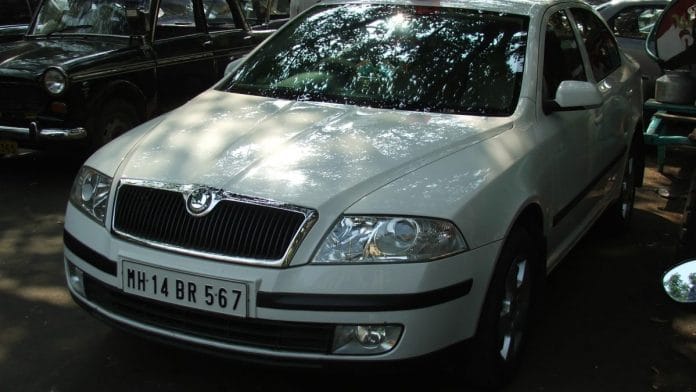I have been to hundreds of car launches over the past two decades. Usually, it is always the same schtick. Some song and dance, a few models and a velvet cover dramatically removed under enough flashing lights to set off a fit. And then you get to the name. Sometimes we already know it, along with the car’s features, and sometimes we don’t. But there is a reason that this particular launch is still seared into my memory.
Many years ago, at the biennial Auto Expo at New Delhi’s Pragati Maidan on National Press Day, a brigade of journalists trooped in formation towards the hall that featured the Czech carmaker Skoda Auto. The management looked quite pleased with themselves—after all, they were going to launch the second-generation Octavia sedan in India in a few minutes. But because Skoda had decided to keep manufacturing the old Octavia, their latest offering needed a new name. The car was christened the ‘Laura’. A hush descended on the hall. The clickety-clack of the photographers’ cameras was the only sound.
Then, as if someone pressed the play button, sudden peals of laughter and extremely inappropriate jokes rang all around. Skoda Auto had done this to themselves. In case you don’t understand, ‘Laura’ sounds awfully similar to the Hindi/Punjabi slang for male genitalia. Even the most professional automotive journalists and photographers, not 20-somethings like me at the time, were shaking their heads. “Who the hell did they run this name past?” I recall one of them saying.
But this incident is not only seared into my memory. The entire Indian automotive industry, including new management at Skoda, remembers it and realises that car names can go horribly wrong. The Laura still did well, in fact, it was actually a good car, but when the third-generation Octavia came around, Skoda India reverted to the original name.
Not every carmaker is as lucky as the German luxury brands. Seven generations of the BMW 3-series have been called the ‘3-series’ and it is the same for seven generations of the Mercedes-Benz C-Class, although the very first one was technically the ‘190E’. In fact, one way of knowing that your significant other is a ‘car nerd’ is if they refer to BMWs as the E90, F30 or G20. These are all internal codes for various generations of the BMW 3-series, the G20 is the current model.
Also Read: New Brezza is not just a facelift. Maruti Suzuki has worked to make it tough
Names can come from anywhere
Names today are thought of very early in the design process, sometimes well before the design of the car has been finalised. A few months ago, when Skoda was about to launch their new sedan, the Slavia, I spoke with Skoda Auto India’s director Zac Hollis, about how Slavia was chosen as the name of the new sedan and the process that goes into naming a car. In fact, the name ‘Slavia’ is actually derived from the Czech carmakers’ non-motorised history. One of its precursor companies was named ‘Slavia Cycles’. Also, ‘Slavia’ not only delves into the Slavic nature of the Czech but also means ‘victory’—in keeping with Skoda’s naming tradition for sedans, which is always European and feminine.
Names for cars, however, don’t actually have to make sense in every market that they are sold. Take the Maruti Suzuki Ertiga for example. Executive director Shashank Srivastava explains that the name is literally ‘three-row’ in Bahasa—the primary language in the Indonesian archipelago. “It just sounded nice, so we stuck with it for India as well, and consumers have appreciated the name.” However, he did add that the naming process often starts years before a launch: “If it is an India-led product, we have a committee here and we shortlist names and send them to headquarters and they make a shortlist and send it to other markets as well.”
Then come the lawyers, because not every name is available in every market. For example, the car sold in India as the Maruti Ritz was actually the Suzuki Splash in most global markets, but the ‘Splash’ was already registered by Bajaj Auto in India. While Maruti could technically have launched a car with the same name, they decided not to. Thus the name ‘Ritz’, which if you know your luxury hotel chains, was derived from the ‘Ritz Carlton’. While it is a rarer occurrence nowadays, as the market for cars is global, cars sold in India often used to have different names from the same product overseas. Like the Hyundai Santro, whose name is actually a portmanteau of a small resort town on the French Riviera.
Not just lawyers, in order to avoid a repeat of the ‘Laura incident’, most car companies employ teams of linguists to go through all possible connotations of names, not just in India but across the world. This is why carmakers tend to come up with insipid, yet non-controversial names, like the Maruti Suzuki Celerio. Other names get repeated. The car Indians called Maruti Esteem was sold as Suzuki Swift abroad, and the original Baleno was a large sedan. Now they’re both best-selling hatchbacks.
Some carmakers often name their cars to gain some ‘heritage’. For example, Shanghai Automotive Industrial Corporation (SAIC), owners of the Morris Garages (MG), has been trying to ‘Britwash’, in a manner of speaking, their Chinese cars with names like Hector and Gloster. The Kia Seltos harks back to Greek mythology, the name being derived from Celtus, the son of Heracles and eponymous progenitor of the Celtic people (Irish and Scots of the modern age).
At the end of the day, as Hollis says, the name of a car should be something easy on the tongue that makes you proud. “But it will make little difference if the car isn’t good.”
@kushanmitra is an automotive journalist based in New Delhi. Views are personal.
(Edited by Srinjoy Dey)






